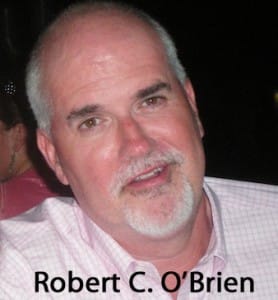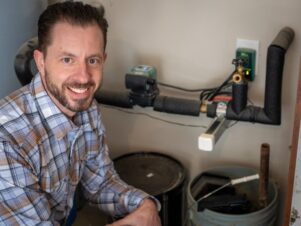 It’s a pretty common belief, at least in my neck of the woods, that condensing boilers and baseboard don’t “work well together” and the most cited reason is the need for high operating temperatures with baseboard. Of course they work, but how well? Awfully well in the vast majority of cases!
It’s a pretty common belief, at least in my neck of the woods, that condensing boilers and baseboard don’t “work well together” and the most cited reason is the need for high operating temperatures with baseboard. Of course they work, but how well? Awfully well in the vast majority of cases!
Traditional boilers in the USA are “non-condensing,” which means that they discharge flue gases at a high enough temperature that all water vapor is carried out of the flue. The water vapor is discharged with the other flue gases and never has a chance to condense to a liquid. The problem is that the hotter the flue gases, the more fuel is wasted and the less efficient the boiler.
So how does a condensing boiler work?
They absorb enough heat from the flue gases to drop the exhaust temperature below the point that the water vapor in the gases condenses into liquid and gives up its latent energy. Sounds great but the flue gas can only condense when the return water temperatures are 135F or less. The rated output of baseboard is realized at 180F.
How can this work at all, much less well? A few reasons!
First and foremost is the use of outdoor reset; can’t say I’m aware of any mod/con without integral ODR. Lowering the supply temperature by the use of ODR will of course yield lower return water temps, low enough to provide operation in the condensing mode for quite a bit of the heating season.
The second contributor to the viability of condensing technology with baseboard is the over-sizing of the baseboard itself; people have a pretty strong tendency to put in more baseboard than a heat loss calculation would indicate. While not as strong as the desire to over size boilers, the baseboard over sizing drive is definitely very dominant in the heating contractor genome. This, unlike boilers that are too big, is actually a good thing; more baseboard means the load can be met with lower water temperatures.
The third main factor is the design temperature; it really doesn’t get that cold all that often! That means the rest of the time, we don’t need to run 180F supply temperatures. Combine these and you will be running in the condensing range for the majority of the heating season, although certainly not all of it.
Dr T. Butcher of Brookhaven National Labs did a study on this topic in 2004 and found that 94% of the heating season time could be spent in condensing mode. It’s not light reading but if you are interested in an in-depth exploration of this topic, it’s available here: http://www0.bnl.gov/isd/documents/28709.pdf
There is another avenue of savings that mod/cons provide that is quite often overlooked: modulation. Modulation is varying the size of the fire in relation to the load. A cast iron boiler has two speeds — on and off. In comparison, a modulating boiler can vary its input, usually at a 4:1 or 5:1 ratio. A 100K Btu modulating boiler can operate from approx 20K Btu to 100K Btu. There is quite a bit of fuel to be saved by having the “right” size boiler on almost every day. I don’t know of any studies done to quantify the savings with modulation but based on anecdotal evidence over many years, I would place it in the 15% range.
A word of advice, don’t over size condensing boilers assuming the modulation will take care of it. I’ve seen 150K mod/cons in 50K heat loss homes and they never get off low fire except on DHW calls, not a recipe for efficiency. Properly applied mod/cons and baseboard can make for a long and happy marriage!
Robert C. O’Brien is the owner of Technical Heating Co. LLC in Mt. Sinai, NY. Robert serves as the Vice President of the national OESP chapter. See more from Robert in his blog “Boiler Sizing & Indirect Water Heaters”, “Converting from Oil to Natural Gas“ & “Heat Loss Calculation on Every Replacement?”




Join the conversation: